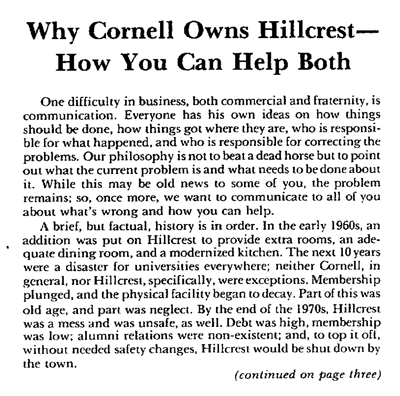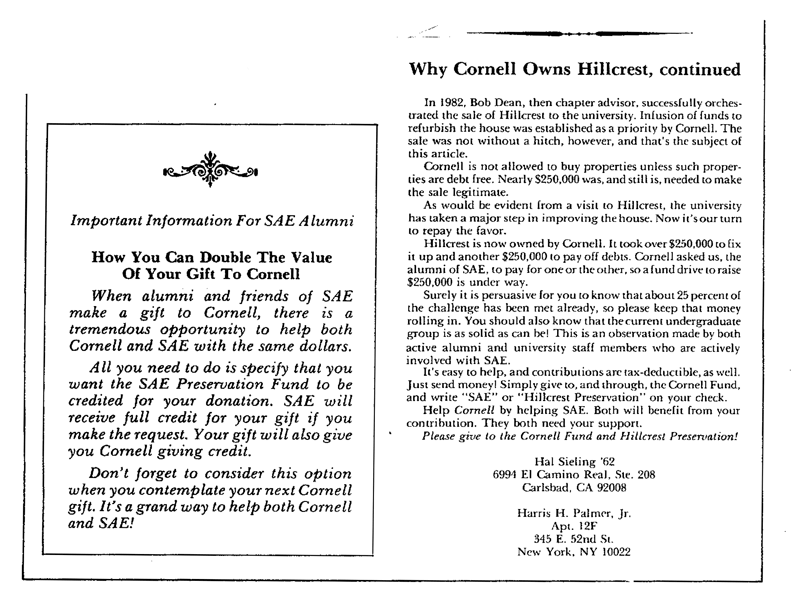Note: As you read this article it is important to read the documents as you go, otherwise you will not see the whole picture.
By Hal Sieling ’62
The facts are that it is a much more pleasant task to talk about the benefits of Cornell ownership of Hillcrest than why we got to this position in the first place. But since I have been involved with this from the beginning, I will take a stab at explaining both.
It all started in the early 1960s when it was determined that we needed additional dining and live-in brothers to pay the ever-increasing costs to run and maintain the fraternity. The old dining area only seated 48 and there were nearly twice that many brothers. Only 38 lived in and that was with double and triple rooms. Most seniors had to live out, and that was impacting chapter unity and leadership.
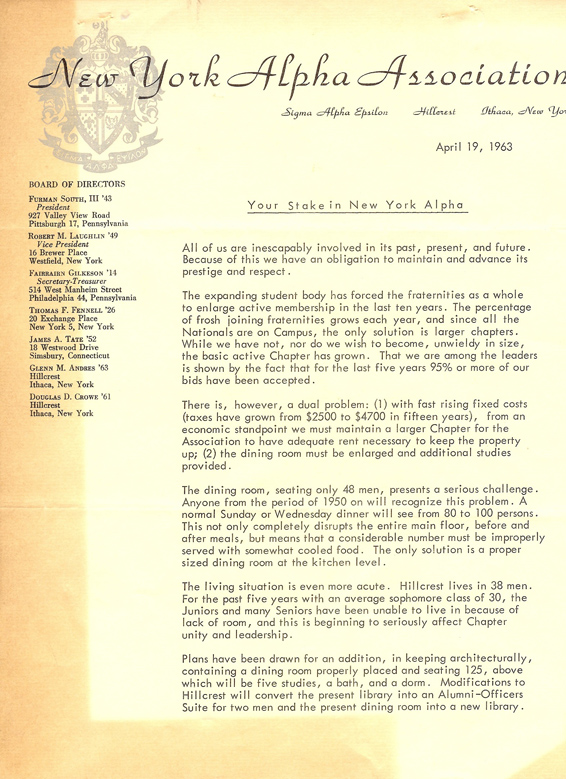
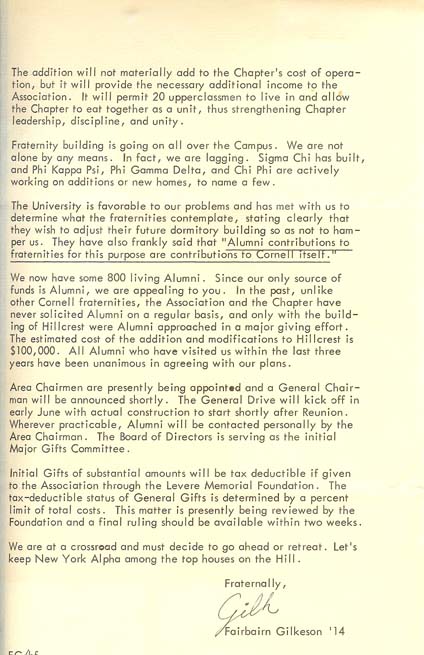
As a result, plans were drawn up and approved to add a dining room to seat 125 and five more rooms. The addition was not supposed to add materially to the chapter cost of operation, but would generate additional income. The deed was done, and the results simply surprised everyone.
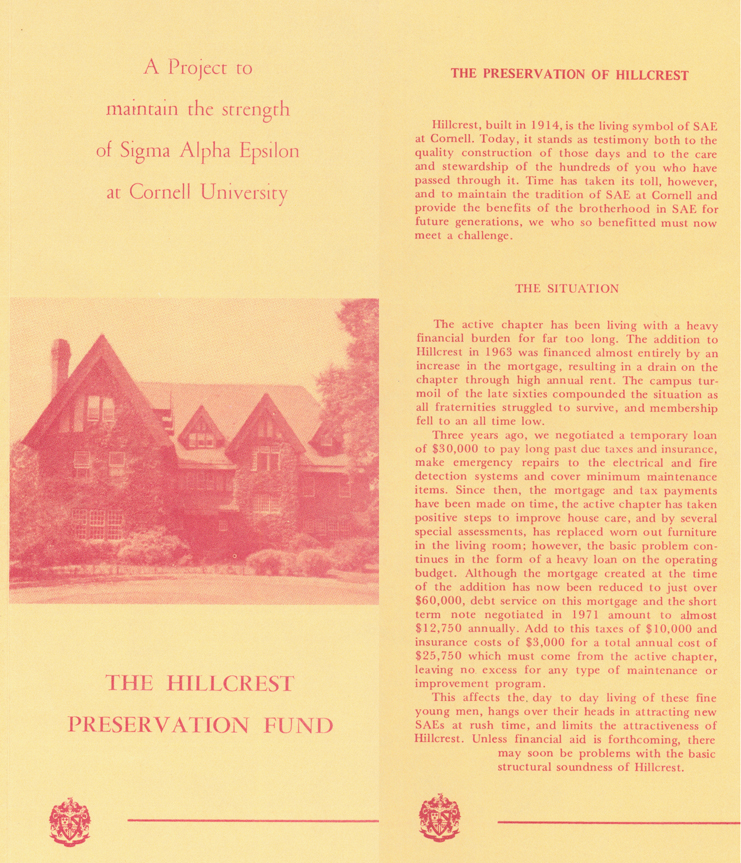
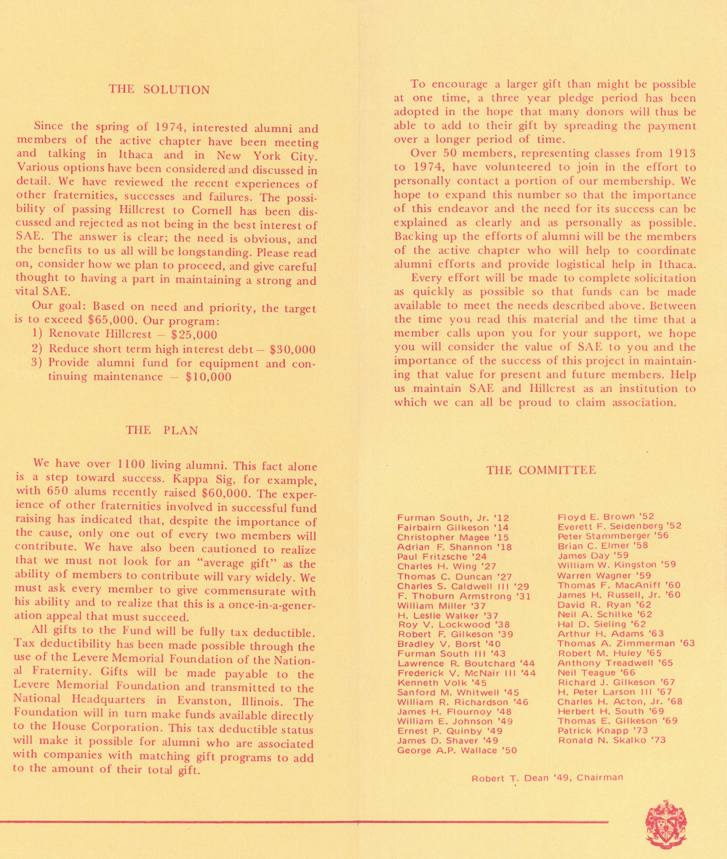

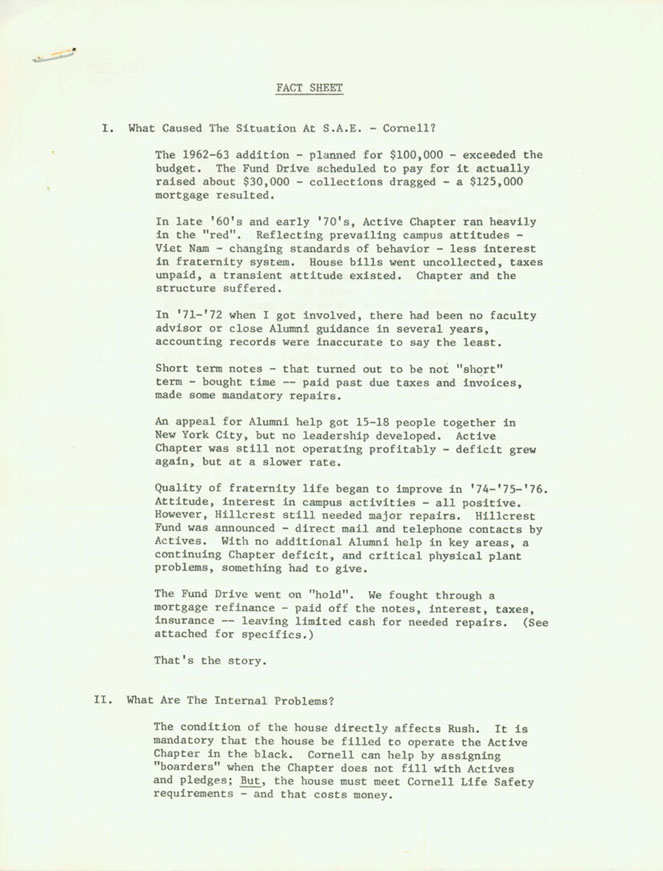
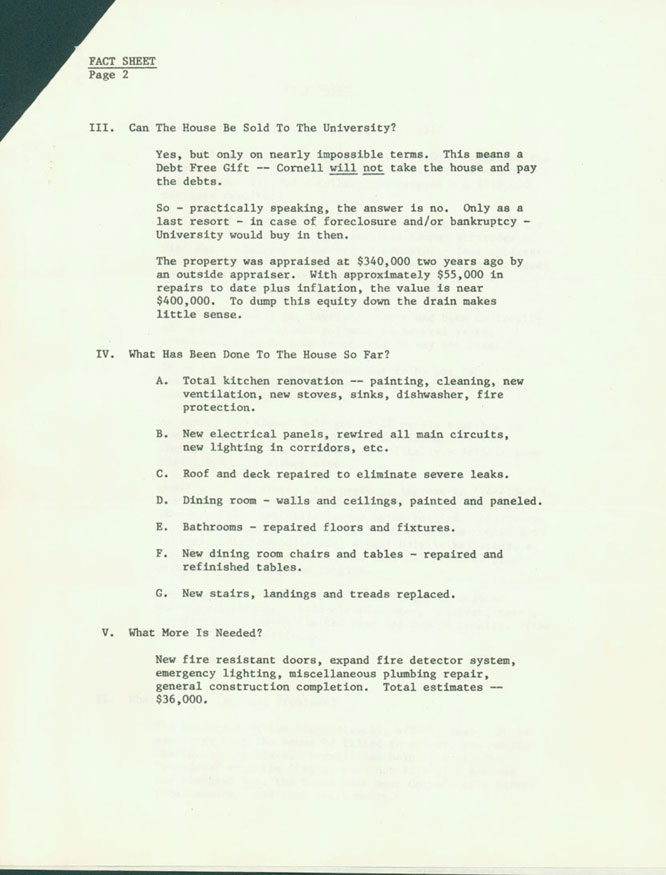
What followed were intense negotiations with the university to have them wave the debt-free transfer of Hillcrest to Cornell. Bob worked on this for a long time, and as you might know, even stepped forward with his own money to keep the house operating until an agreement could be reached. Finally, a transfer was made, and the 1985 Agreement (see archive documents) was endorsed by Cornell, the actives, and the small alumni board that existed at the time.
One has to ask–and numerous brothers have asked–whether we could have gotten a better deal. Harris Palmer and I have both concluded (having worked on this for nearly thirty years) that the answer is an emphatic, NO. We simply did not have the means to generate funds to operate and maintain the house moving forward. NO WAY!
So this brings us to the next question:
Reasons we’re better off There are a number of reasons that it is good that SAE Hillcrest is owned by CU. First and most significant is that there is a three-member partnership involved with Hillcrest. CU, the actives, and the alumni share in decisions related to Hillcrest.
Each of the partners has certain responsibilities. The work load is therefore not overwhelming for any one partner.
Donations to the SAE Development Fund are tax deductible. Without this provision, it is unlikely that SAE would have survived and we would have had success raising development funds.
So long as the actives maintain resonable conduct, they will be permitted to occupy the house. The long arm of the alumni, as well as their pocketbooks, insures this provision of the agreement. (See 1985 Agreement in the archive section of our website.)
Specific active responsibilities include filling the house with live-in brothers, appropriate social activities, academics, normal maintenance, etc.
Alumni need to raise money through CU Fund, which gets CU credit as well as SAE Development credit by writing just one check.
Additionally, we are to advise the chapter, maintain an active alumni association, oversee the facility improvements, approve other programs that enhance the lives of the actives while they are at CU.
Cornell University supports our fund programs, provides programs to enhance cultural development, reports to alumni on finances of the house, provides repairs and maintenance, oversees–where appropriate–the actives in the same manner as for any university housing, and is administratively responsible.
By being in this together, we can achieve much more than we could ever expect if the house was still alumni owned. We simply could not have afforded the maintenance over the years if CU did not become the bank. And, if donations were not tax deductible, it is unlikely that the nearly $1 million raised to date under the agreement would have happened.
The alumni gain the advantage of having support from CU in many areas. CU gains the advantage of having an active alumni group. The actives gain the advantage of support from both alumni and CU.
CU ownership is beneficial to SAE. There are no property taxes for us to pay. There is no fire/casualty insurance to pay. We can get loans from CU. And, as mentioned earlier, tax-free alumni giving results since CU is a 501(c)(3) organization.
However, the alumni must fund capital improvements and maintenance and repair of Hillcrest. And, we must use union labor. Why? CU does not charge us rent for use of the house. Instead, we are asked to maintain the property. That seemed like a good deal when Hillcrest was turned over to CU and it still is.
Here is some more information from the 1984 issue of the New York Alpha News about why Cornell owns Hillcrest:
